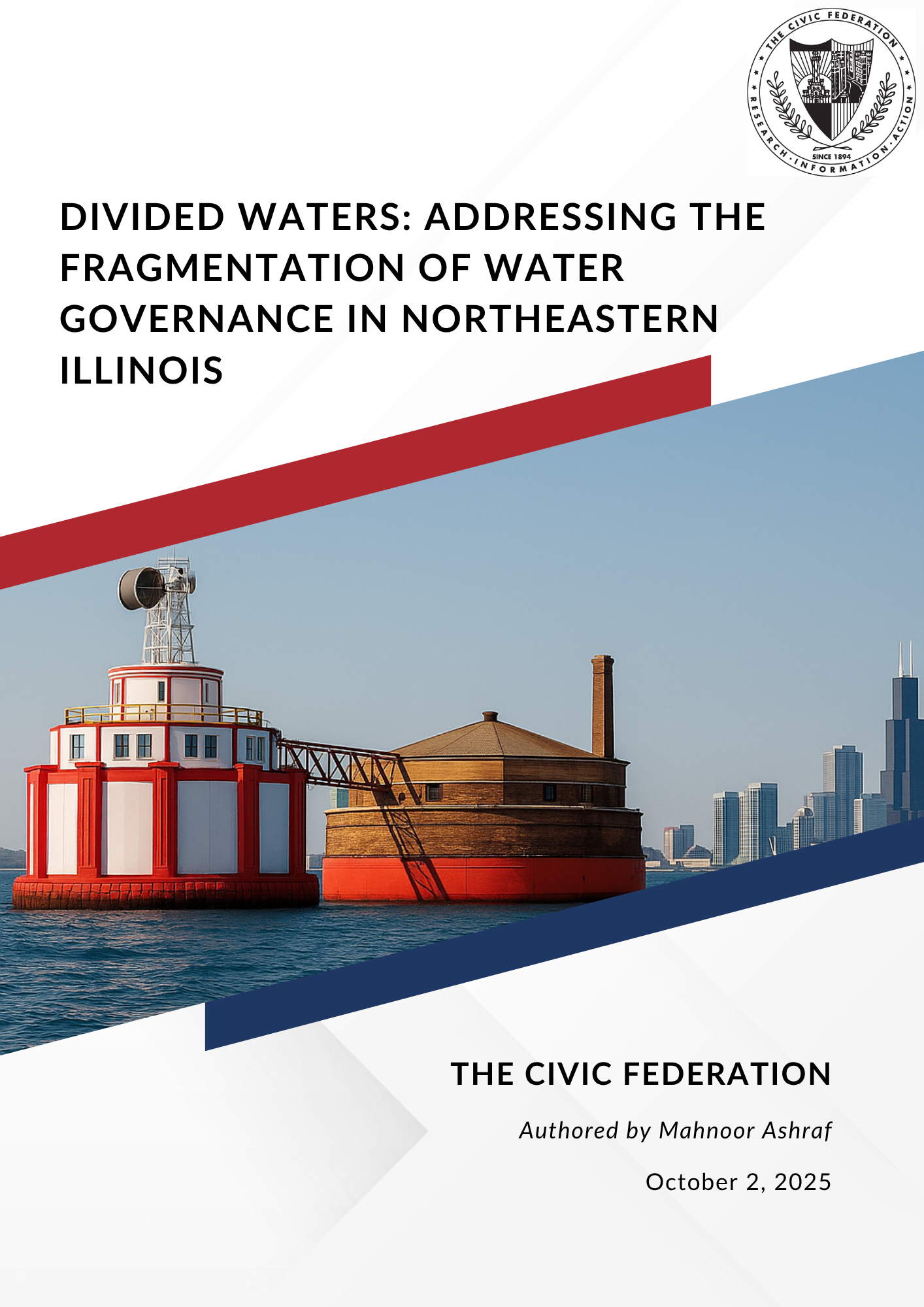October 02, 2025
Click here to read the full report
EXECUTIVE SUMMARY
More than 5.5 million residents in northeastern Illinois rely on Lake Michigan for their drinking water needs. Yet, despite its undeniable importance, the system designed to manage this critical resource is a patchwork of competing interests and fragmented governance, resulting in inefficient delivery of this basic resource. The region that relies on the lake for its water is known as the Lake Michigan Service Area and spans 284 municipalities across seven counties, each with independent water supply arrangements, rates, and infrastructure management. These independent municipalities often have little to no coordination with each other. This lack of cohesion breeds inequities, driving up costs and making access to water for the most vulnerable communities increasingly difficult.
At the heart of this fragmentation is a pricing system where residents in neighboring municipalities often pay vastly different rates for the same resource. Some communities draw water directly from Lake Michigan, while others must rely on buying water through intermediaries, resulting in inflated and confusing costs. This disparity is not just a technical issue. It is a matter of fairness and equity, as lower-income communities are disproportionately burdened by the rising costs of a resource essential to life.
Deficits in centralized oversight have allowed this fragmented system to persist. Although the Illinois Department of Natural Resources (IDNR) has authority over water use and quality throughout the state, it does not provide a comprehensive regulatory framework for water sale and pricing. Instead, IDNR focuses its regulatory power on the issuance of permits for water use and infrastructure construction. Without a unified regulatory framework, most municipalities are left to negotiate their own water supply agreements in isolation, producing opaque pricing structures and inconsistent service delivery. While collectives of municipalities exist under joint water commissions (or comparable structures) can wield significant bargaining power to secure favorable wholesale rates from their suppliers, independent municipalities, particularly those in economically disadvantaged areas, are left to the whims of the market, resulting in higher prices.
By contrast, states like Wisconsin and Ohio and municipalities such as Indianapolis and its suburbs have taken steps towards a more holistically integrated and equitable approach to water governance. Ohio’s centralized water infrastructure funding, facilitated by the Ohio Water Development Authority (OWDA), ensures that municipalities across the state, regardless of size, have access to the resources needed to maintain and upgrade their water systems. Wisconsin’s statewide rate-setting regulatory framework means that municipalities across the state must follow the same guidelines to determine rates. Indianapolis has demonstrated the power of utility consolidation through the Citizens Energy Group (CEG), where the integration of water, wastewater, and stormwater services has resulted in significant savings, improved efficiency, and more equitable service delivery.
These examples highlight the opportunity for northeastern Illinois to embrace a more coordinated approach. By centralizing funding, standardizing rate-setting practices, and fostering collaboration between municipalities, Illinois could address the systemic inefficiencies that have long plagued water governance in the region. The path forward is not without its challenges, as political resistance, entrenched local interests, and historical acculturation to fragmentation cannot be easily overcome. However, with the right framework, Illinois can transform its fragmented system into one that serves all communities fairly and efficiently.
This report explores these challenges and opportunities, arguing that northeastern Illinois’ water governance system should not continue as it is. The fragmentation of authority, the lack of a unified and holistic strategy, and the disparities in pricing are not mere inconveniences but deep structural problems that threaten the long-term sustainability of the state’s water infrastructure. The time has come for Illinois to rethink its approach to water governance, not through incremental reforms or piecemeal efforts, but through a bold, coordinated strategy that draws from the successes of other regions and responds to the pressing needs of its own residents.
Correction (October 29, 2025):
A previous version of this report contained an error in a section discussing water rates for specific municipalities. The report was updated on October 29, 2025, to correct this information.
Click here to read the full report

